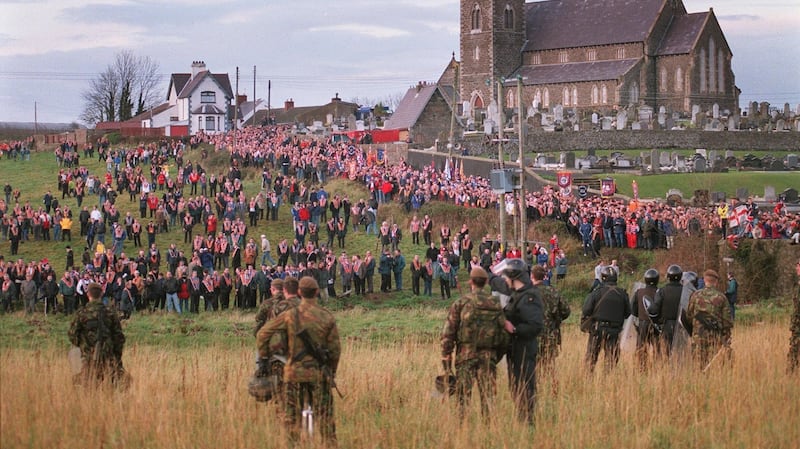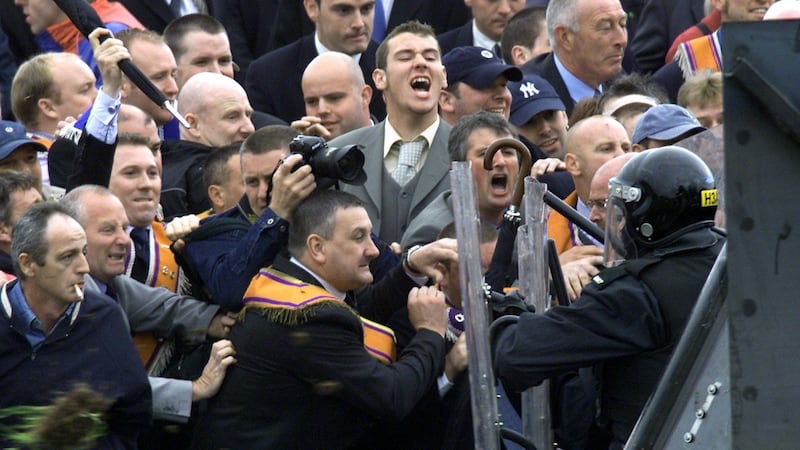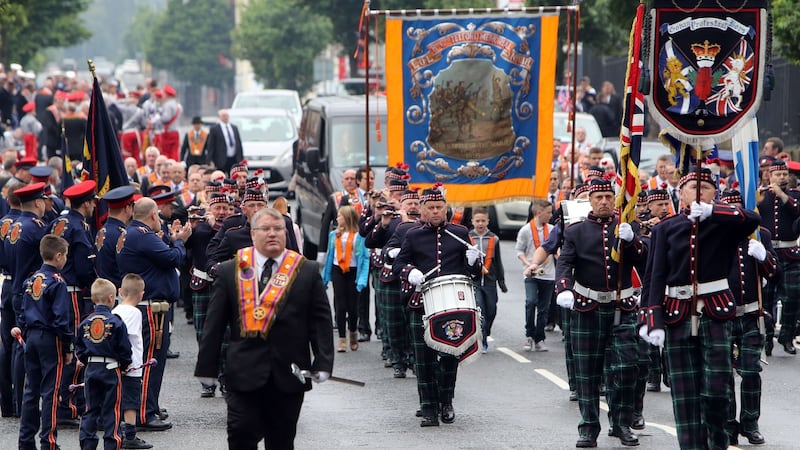What is “The Twelfth”?
It is the annual Ulster Protestant celebration - held every year on July 12th - in religiously divided Northern Ireland that commemorates a 329-year-old military victory when the last British Catholic monarch King James II was defeated by Protestant King William, formerly Prince of Orange in Holland, at the Battle of the Boyne.
How is it celebrated?
Each year, members of the Orange Order - named after the victorious king and founded in 1795 - carry banners and flags in parades across Northern Ireland accompanied by marching bands carrying musical instruments that include pipes and drums. Orangemen wear distinctive bowler hats, white gloves and orange collarettes. The order, a "fraternal" organisation, has 35,000 to 40,000 members, including an estimated 2,000 in the Republic. The annual commemoration starts with bonfires and fireworks on the night of the Eleventh.
What are they celebrating?
They are commemorating the Glorious Revolution, or Revolution of 1688, that granted Protestant groups freedom of worship when King William and Queen Mary, James II's daughter, seized the British throne of the Catholic king. The new king established a parliamentary democracy, representing a shift from an absolute monarchy to parliamentary monarchy. A Bill of Rights passed by the 1689 parliament declared that no future monarch could be a Catholic or be married to a Catholic. On the Twelfth, Ulster Protestants are celebrating "King Billy" as the champion of the Protestant faith who secured the subsequent Protestant ascendancy - the political, economic and social domination by the minority Protestant population for three centuries - in Ireland. The defeated King James's claims to the throne ended with the Battle of the Boyne in July 1690.
Why is it contentious?
It is viewed by the predominantly Catholic nationalist community in Northern Ireland as a provocative display of triumphalism.
Why are bonfires built and lit on the Eleventh Night?
Bonfires were lit, the Orange Order says, across Ulster "from hilltop to hilltop" in celebration when news of William and Mary's coronation reached Ireland and to guide the king and his 15,000 troops as they landed in Carrickfergus and marched in to Belfast in June 1690. The commemorative "Eleventh Night" bonfires are also said to represent the camp fires of the king's troops the night before the Battle of the Boyne.

What happened at Drumcree?


The Drumcree Orange parade has been the most contentious in modern times. A standoff began in the mid-1990s after police stopped an annual Orange parade in Portadown, Co Armagh passing down the mainly nationalist Garvaghy Road on their annual march from Drumcree church. Attempts to ban the march from going down the road before 1998 led to Loyalist rioting in Portadown and across Northern Ireland in July of that year. The parade has been banned from passing down the road since then. There was Republican rioting when Orangemen were permitted by the UK government to march down the road in 1997.

What happens to contentious Orange parades now?
The Parades Commission, the “quasi-judicial non-departmental public body” born out of the Drumcree dispute, decides whether restrictions should be applied on contentious marches and has the power to ban parades outright. It accepts submissions and encourages dialogue between marchers and residents.

In its most recent annual report, for the year to the end of March 2018, the commission received notifications of 4,499 parades and parade-related protests, including 2,435 Protestant/Unionist/Loyalist parades and 126 Catholic/Republican/Nationalist parades. Some 190 of the 4,499 were considered sensitive, including 178 Protestant/Unionist/Loyalist parades. It imposed conditions on 166 Protestant/Unionist/Loyalist parades and eight Catholic/Republican/Nationalist parades during the year.
The commission said in the 2018 report “the Drumcree dispute remains unresolved” - more than two decades after it brought Northern Ireland to a standstill.
“Although the weekly protest parade has limited impact on community life, the Drumcree dispute continues to cause resentment,” said the commission.










